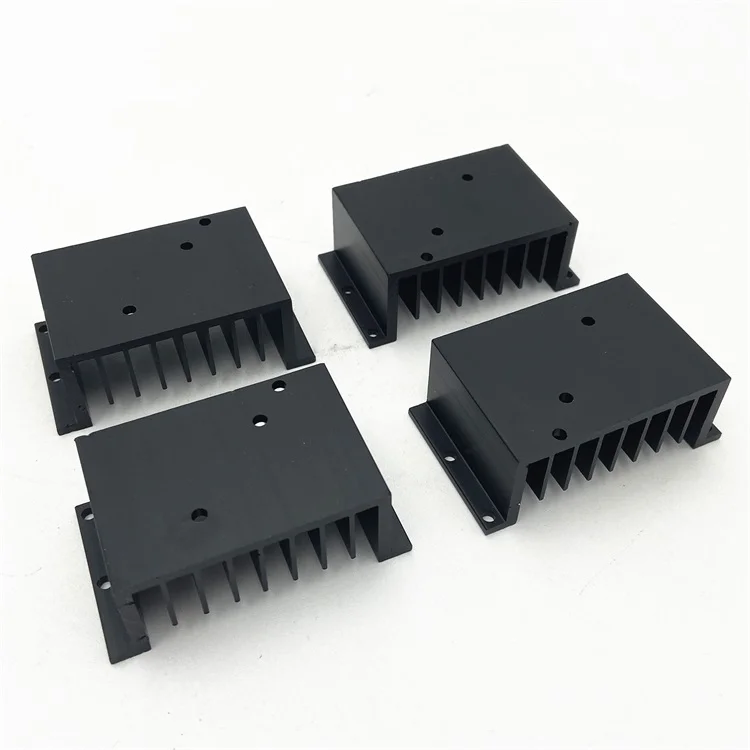- This topic is empty.
-
AuthorPosts
-
2025-10-29 at 2:43 pm #12297
In today’s high-density electronic systems, thermal control has become a mission-critical factor. A CNC machining aluminium extrusion heatsink provides a sophisticated solution that combines material efficiency, design flexibility, and superior heat dissipation performance. Through computer numerical control (CNC) precision machining, extruded aluminum profiles are shaped into heatsinks that deliver consistent quality and optimal thermal performance across diverse applications—from LED lighting to industrial automation and power electronics.
Aluminum extrusion is particularly favored for heatsinks because of its high thermal conductivity, lightweight nature, and adaptability to custom designs. When combined with CNC machining, it transforms raw extrusions into precisely engineered components that ensure maximum surface area exposure and efficient airflow management. In this blog post, as a high precision custom aluminum heatsink manufacturer, Vibo will share CNC machining aluminum extrusion heatsink performance, its applications, etc.
Why Choose Aluminium Extrusion for CNC Machined Heatsinks
Aluminium extrusion offers a cost-effective yet high-performance foundation for heat dissipation. During the extrusion process, aluminum billets are pushed through a die to create continuous profiles with complex geometries. These profiles can include intricate fins and channels, allowing for efficient thermal transfer without excessive weight.
When integrated with CNC machining technology, the extruded heatsink gains additional precision—tight tolerances, smooth surface finishes, and refined structural integrity. This hybrid manufacturing approach enables customization to meet the specific requirements of electronic assemblies, power modules, or communication systems.
Key benefits of aluminium extrusion include:
-
Excellent thermal conductivity and corrosion resistance
-
Flexibility for complex cross-sectional designs
-
Lightweight yet robust structure suitable for portable devices
-
High recyclability, supporting sustainable manufacturing
Precision Engineering: CNC Machining Enhances Heatsink Performance
The role of CNC machining in aluminium heatsink production extends beyond shaping—it defines performance accuracy. With advanced multi-axis machining centers, manufacturers can achieve precise cutting, drilling, and surface milling, ensuring perfect flatness and alignment for thermal interfaces.
CNC machining allows fine-tuning of heatsink fins, base thickness, and mounting holes, which directly impacts thermal efficiency and assembly reliability. High-precision machining also enables integration of custom features such as threaded holes, dovetail joints, and air channels, providing flexibility for OEM applications in automotive, telecommunications, and computing hardware.
Moreover, CNC processing ensures repeatability across large production runs, minimizing thermal variance and optimizing contact between heatsink surfaces and power components—critical for high-performance thermal management.

Design Optimization: Custom CNC Machined Aluminium Extrusion Heatsinks
Modern electronics often require custom aluminium extrusion heatsinks tailored for specific thermal loads and spatial constraints. CNC machining offers engineers complete control over geometry and performance characteristics.
Through simulation-driven design, parameters such as fin density, spacing, and surface finish can be optimized to achieve maximum heat transfer while maintaining mechanical stability. Machining also allows for hybrid designs that combine extruded fins with milled heat spreaders or mounting bases.
Anodizing and surface treatment further enhance the heatsink’s performance by improving emissivity and corrosion resistance. The result is a durable, efficient, and visually refined thermal management component ideal for both industrial and consumer-grade applications.
Applications of CNC Machined Aluminium Extrusion Heatsinks
The versatility of CNC machined aluminium extrusion heatsinks makes them essential in numerous industries, including:
-
LED Lighting Systems: Efficient heat dissipation extends LED lifespan and color stability.
-
Automotive Electronics: Manages heat in EV battery systems, control units, and power converters.
-
Telecommunication Equipment: Ensures stable operation of base stations and 5G components.
-
Industrial Automation: Supports cooling in servo drives, PLCs, and power modules.
-
Consumer Electronics: Used in high-performance PCs, amplifiers, and audio systems.
Each sector benefits from tailored geometries and precision fits that maintain optimal operating temperatures even under continuous load.
Sustainability and Innovation in Aluminium Heatsink Manufacturing
Beyond performance, CNC machined aluminium extrusion heatsinks align with sustainability goals. Aluminum is one of the most recyclable metals, maintaining its thermal and mechanical properties through repeated cycles. By leveraging extrusion and CNC machining, manufacturers can minimize waste material, reduce energy consumption, and improve production efficiency.
Innovations such as friction stir welding and selective anodizing are further advancing heatsink manufacturing, allowing lightweight composite designs and enhanced surface performance. The integration of AI-assisted thermal simulations also helps predict heat flow dynamics, shortening development cycles and ensuring consistent product reliability.
Future Trends: Smart Thermal Management with CNC Aluminium Heatsinks
As power density increases across next-generation devices, smart heatsink technologies are emerging. Future designs will likely integrate sensors, phase-change materials, or embedded liquid-cooling channels within the aluminium body. CNC machining’s precision enables these complex integrations while maintaining compactness and reliability.
The synergy between CNC machining and aluminium extrusion technology will remain at the core of this evolution—offering scalable, high-precision, and environmentally friendly solutions for future electronics.
Conclusion
The CNC machining aluminium extrusion heatsink represents the perfect intersection of thermal performance, design flexibility, and sustainable engineering. Its ability to combine the structural advantages of extrusion with the precision of CNC finishing makes it an indispensable solution for modern electronic systems.
As industries continue to demand more power in smaller spaces, precision-engineered aluminium heatsinks will play a vital role in ensuring efficiency, reliability, and innovation across all high-performance technologies.
-
-
AuthorPosts
- You must be logged in to reply to this topic.